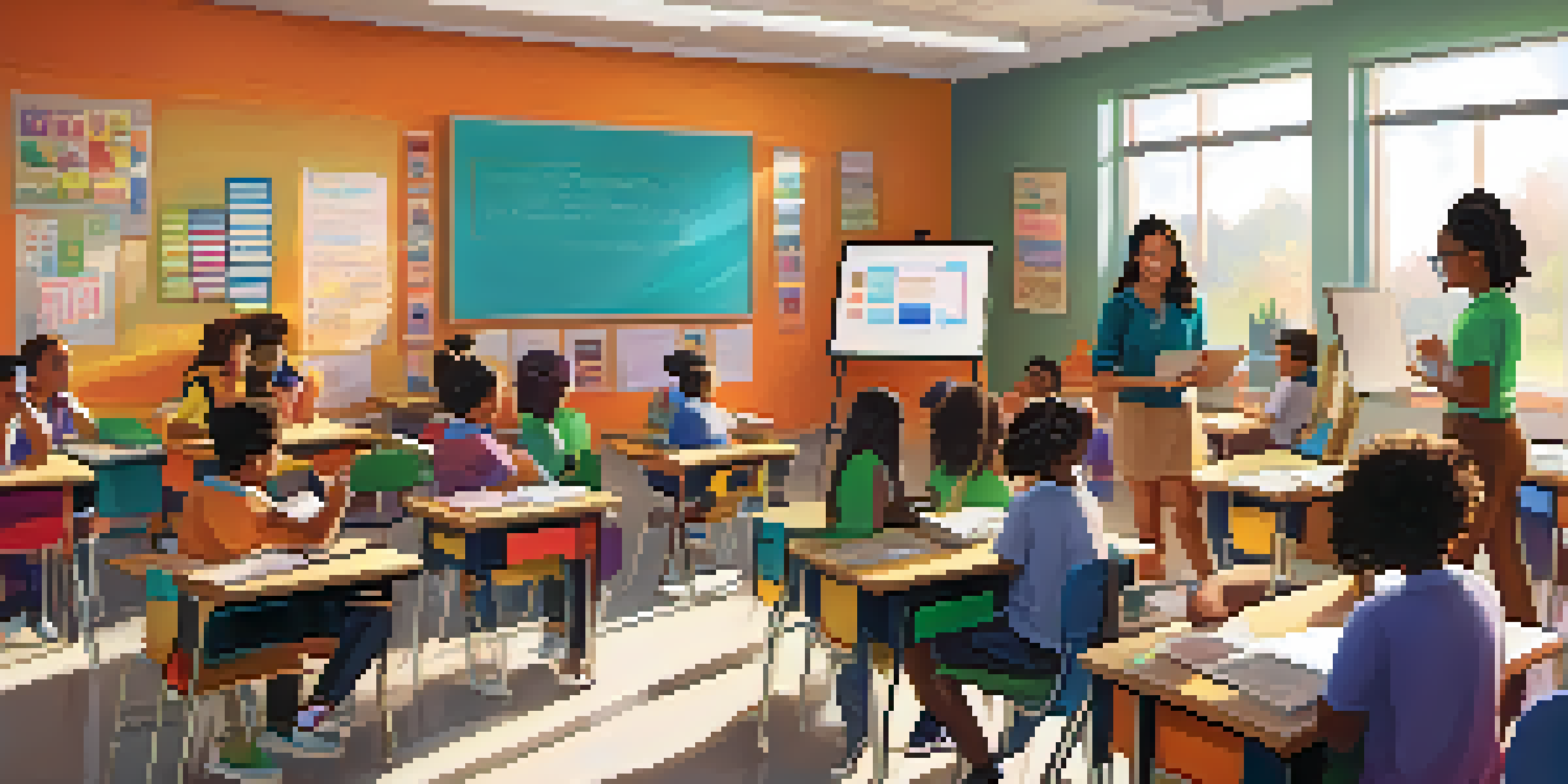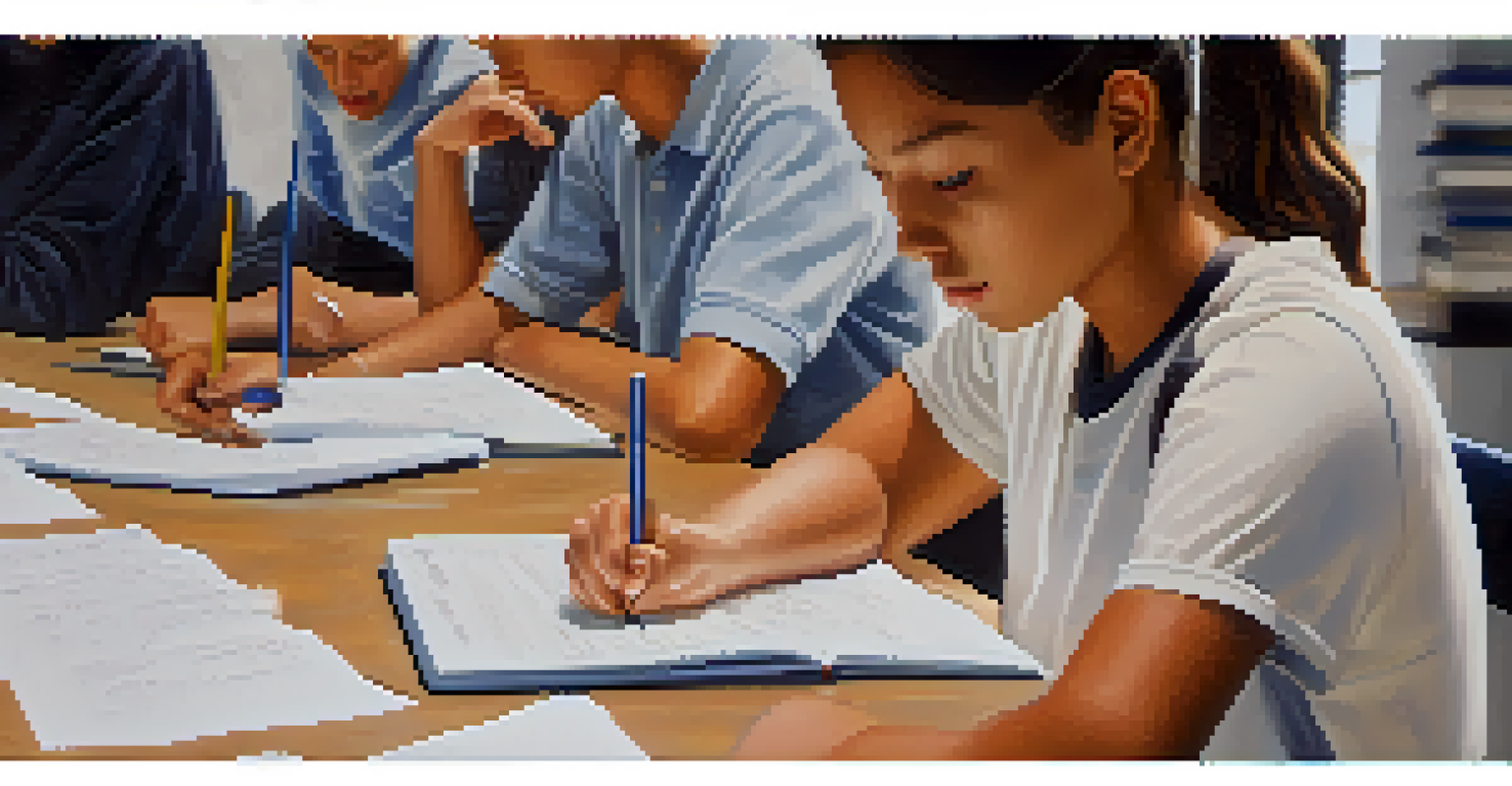Aligning Learning Objectives with Blended Assessment Methods

Understanding Learning Objectives in Education
Learning objectives are clear statements that define what students are expected to learn and achieve. They serve as a roadmap for both instructors and learners, guiding the educational process. By articulating specific skills or knowledge areas, these objectives help ensure that teaching and assessment are closely aligned.
What is the use of a house if you haven't got a tolerable planet to put it on?
For example, if a learning objective is to enhance critical thinking skills, the assessments should also focus on evaluating those skills through problem-solving tasks. This alignment is crucial because it not only helps in measuring student progress but also provides clarity for students on what they need to focus on. Essentially, learning objectives set the stage for a successful educational journey.
Understanding and articulating these objectives is the first step in creating an effective blended assessment strategy. When everyone involved is on the same page regarding what is expected, it creates a more cohesive learning experience. This alignment forms the foundation for developing assessments that truly reflect student understanding.
What are Blended Assessment Methods?
Blended assessment methods combine traditional assessment techniques with modern approaches, such as digital tools and collaborative projects. This combination allows for a more holistic evaluation of student learning by incorporating various formats like quizzes, presentations, and peer assessments. The goal is to provide multiple avenues for students to demonstrate their understanding.

For instance, a blended assessment might include an online quiz to test knowledge retention and a group project that fosters collaboration. By utilizing different methods, educators can cater to diverse learning styles and preferences. This flexibility helps create a more inclusive environment where all students have the opportunity to shine.
Learning Objectives Guide Education
Clear learning objectives provide a roadmap for both instructors and students, ensuring alignment between teaching and assessment.
Blended assessments not only enhance engagement but also provide valuable feedback to both students and instructors. They allow for real-time adjustments to teaching strategies based on student performance. This adaptability makes blended assessments a powerful tool in aligning learning objectives with evaluation tactics.
The Importance of Alignment in Education
Alignment between learning objectives and assessment methods is critical for educational success. When assessments are designed to directly measure the objectives, students are more likely to understand what is expected of them. This clear connection helps minimize confusion and enhances motivation, as students can see the relevance of their efforts.
Education is not the filling of a pail, but the lighting of a fire.
For example, if students know that their project work will be evaluated based on specific criteria outlined in the learning objectives, they can focus their efforts accordingly. This targeted approach not only boosts their confidence but also improves their chances of achieving the desired outcomes. In essence, alignment fosters a more purposeful learning experience.
Moreover, when educators align their assessments with learning objectives, they can more accurately gauge the effectiveness of their teaching methods. This feedback loop enables continuous improvement in both instruction and assessment strategies, ultimately leading to better educational outcomes for students.
Creating Effective Learning Objectives
Crafting effective learning objectives requires careful consideration and specificity. Objectives should be SMART: Specific, Measurable, Achievable, Relevant, and Time-bound. This framework ensures that the objectives are clear and attainable, providing a solid foundation for both teaching and assessment.
For example, instead of stating a vague objective like 'understand biology,' a more effective objective could be 'analyze the process of photosynthesis in plants by the end of the semester.' This clarity not only guides students but also allows educators to design relevant assessments that accurately measure student understanding.
Blended Assessments Enhance Learning
Combining traditional and modern assessment methods allows for a more holistic evaluation of student understanding and engagement.
By taking the time to create well-defined objectives, educators set the stage for successful alignment with blended assessment methods. This strategic approach not only enhances the learning experience but also improves student outcomes, making the educational process more impactful.
Strategies for Blended Assessment Design
When designing blended assessments, it's important to consider a variety of strategies that cater to different learning styles. This could include a mix of formative assessments, like quizzes and discussions, alongside summative assessments, such as final projects or exams. By diversifying assessment methods, educators can create a more engaging learning environment.
One effective strategy is to incorporate peer assessments, where students evaluate each other's work based on specific criteria. This not only fosters collaboration but also encourages critical thinking as students reflect on their own work and that of their peers. Additionally, technology can play a vital role in blended assessments, offering platforms for interactive quizzes and online discussions.
By employing these diverse strategies, educators can ensure that assessments align with learning objectives while also providing multiple opportunities for students to showcase their knowledge. This approach not only enhances student engagement but also enriches the overall learning experience.
Evaluating the Impact of Blended Assessment
After implementing blended assessments, it's crucial to evaluate their effectiveness in meeting learning objectives. This evaluation can be done through student feedback, performance analysis, and reflective practices. Understanding how well the assessments align with the objectives provides valuable insights for future iterations.
For instance, if students consistently struggle with a particular assessment type, it may indicate a misalignment with the learning objectives. Gathering this feedback allows educators to adjust their approach, ensuring that future assessments better serve the learning goals. This continuous improvement cycle is key to enhancing educational outcomes.
Alignment Boosts Educational Success
Ensuring that assessments directly measure learning objectives minimizes confusion and enhances student motivation.
Additionally, evaluating the impact of blended assessments can inform professional development for educators. Sharing best practices and learning from each other's experiences can lead to more effective teaching strategies that align with student needs, ultimately benefiting the entire educational community.
Future Trends in Learning Objectives and Assessment
As education continues to evolve, so too do the strategies for aligning learning objectives with assessment methods. Trends indicate a growing emphasis on personalized learning, where assessments are tailored to individual student needs and learning preferences. This shift represents a move away from one-size-fits-all approaches to more customized educational experiences.
Another trend is the integration of technology in assessments, such as the use of artificial intelligence and data analytics to evaluate student performance. These advancements can provide real-time feedback, allowing educators to adjust their teaching methods dynamically. This tech-driven approach not only enhances engagement but also aligns assessments more closely with learning objectives.

Looking ahead, it’s clear that the landscape of education is changing, and staying informed about these trends is vital for educators. Embracing new methodologies and technologies will enable educators to create more effective teaching and assessment strategies, ultimately leading to improved student outcomes.